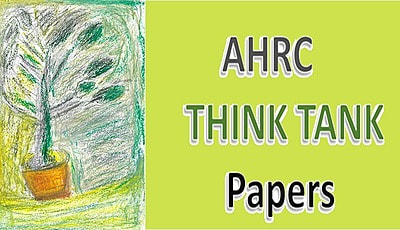SOUTH KOREA: The police should respect the NHRC’s recommendations on the candlelight protests
According to the Korean National Police Agency’s (KNPA) press release of October 29, 2008, the police see the National Human Rights Commission of Korea’s findings about the candlelight protests as partial. Two days earlier on October 27, the Commissions all-member committee concluded that the Korean police used excessive force and violated the rights of protesters, while dispersing the candlelight rallies against the American beef imports. The Commission also recommended the police to strictly abide by defensive guidelines and prohibit the misuse of fire extinguishers. It also called for a warning to the KNPA Chief and the censure of riot police commanders. In fact, the Commission gave a clear signal to the police that they should observe the minimum standards of their code of conduct, regardless of the protests legality. (The full text of the Commission’s recommendations is presented below).
The AHRC is concerned by the KNPA’s statement that the Commissions findings are based on “a few exceptional cases of police abuse” and did not consider the candlelight protests were “illegal and violent”. Interestingly, the KNPA gave the same opinion on Amnesty Internationals final report, which confirmed the Korean police’s use of unnecessary and undue force against protesters. In a joint-fact finding mission report, the AHRC and the Asian Forum for Human Rights and Development (FORUM-ASIA) expressed similar views regarding the policing of the candlelight protests.
To avoid similar allegations by the police and to ensure the impartiality and accountability of its inquiry as an independent government agency, for almost three months, the Commission carefully inquired into 130 petitions relating to the allegation of police abuse during the candlelight protests, listened the testimonies of both protesters and police and strictly dealt with relevant evidence, before giving a final conclusion.
The significant criticism from both inside and outside the country has fallen on deaf ears, however. As before, in yesterday’s press release, the police parroted that they will protect and support a peaceful legal protest, while firmly dealing with illegal and violent protests “in accordance with laws and principles”.
The following are just a few examples of the atrocious actions and behavior of the police during the past few months’ protests:
– Although it withdrew the plan after facing huge public criticism, on August 6, the Seoul Metropolitan Police Agency announced that it would pay compensation to officers depending on the number of candlelight protesters they arrested, to be calculated retroactively into their pay packets starting from May 2 (AHRC-STM-208-2008).
– The Seoul Metropolitan police allegedly forced at least six arrested female protesters to remove their bras with the excuse of protecting them from committing suicide in custody (AHRC-STM-219-2008).
– A 45-year-old Mr. Choi Eun-Gwang was arrested by the police on July 5 for posting handbills relating to a candlelight rally on a wall near his house. The police wrote in an investigative report that Mr. Choi hit an officer at the time of his arrest, which he has denied (AHRC-UAC-161-2008).
– The police also arrested several internet activists and investigated mothers who went to the rallies with their babies to express their concern about their childrens health. The police further accused those mothers of abusing child rights and being incapable of good parenting.
South Korea’s Act on Assembly and Demonstration–denounced by rights groups as excessively limiting the right of assembly — has been frequently abused by the police to label the candlelight protests as illegal and justify their arbitrary actions against protesters. Together with several negative provisions limiting the freedom of assembly, this Act includes the prohibition of any assembly to be held after sunset. The Constitutional Court of Korea is under process of reviewing whether the Act violates fundamental rights guaranteed in the Constitution.
The police alone cannot be the judge of their actions. Democratic countries have check and balance mechanisms including the national human rights institutions, which functions to monitor the conduct of state agencies and officials and to protect the rights of citizens. The AHRC therefore strongly urges the KNPA as well as the Korean government to respect the Commissions recommendations and protect the rights of Korean citizens.
We present the full text of the Commission’s recommendations (unofficial English translation) below for your reference.
1. The Commission concludes that in some occasions during the candlelight rallies, the police suppressed the protesters in excessive and aggressive manners, which led to the violations of their rights, for example the wounding of some protesters. Therefore, the Commission recommends the Minister of the Public Administration and Security to give a warning to the National Police Agency Chief in accordance with the chain of command responsibility.
2. The Commission recommends the National Police Agency Chief to instruct the police to strictly abide by defensive guidelines (as oppose to offensive actions) during the protests in order to protect the security of citizens and prevent human rights abuses.
3. The Commission recommends the National Police Agency Chief to censure the chief commander of the riot police as well as the 4th riot police division commander attached to the Seoul Metropolitan Police Agency, in accordance with the chain of command responsibility, regarding the human rights abuses that occurred during the suppression operation at around the Angook-dong Rotary in the morning of June 1, 2008 and Taepyeongno and Jongno at around midnight of June 28, 2008, respectively.
4. The Commission acknowledges that the protesters, the residents nearby and many passers-by passing the protest area suffered due to the polices extensive blockage of traffic. The Commission therefore recommends the National Police Agency Chief not to restrict traffic unless it is confirmed to be involved with the protest.
5. The Commission recommends the National Police Agency Chief to make a legal regulation higher than a Ministerial ordinance, which defines the specific use of water cannons, for example the maximum water pressure and the minimum range, as it may cause serious injury to a person.
6. The Commission is concerned that when the police use fire extinguishers in dispersing protesters, the fire extinguisher gas may cause harm to persons and its use creates a smoke screen that can hide the riot police’s acts of violence and encourage the violence. Therefore, the Commission recommends the National Police Agency Chief to instruct the police not to directly spray the fire extinguisher at persons and restrict its use for the purpose of firefighting.
7. The Commission recommends the National Police Agency Chief to take measures to prevent riot police from the throwing of objects, as this causes high risk for the unarmed protesters.
8. The Commission recommends the National Police Agency Chief to stop the police’s practice of extracting reflective statements from arrested protesters in violation of The Act on Assembly and Demonstration.
9. The Commission recommends that the National Police Agency Chief ensure riot police wear name tags on their uniforms as well as riot gear so that they can be easily identified.



